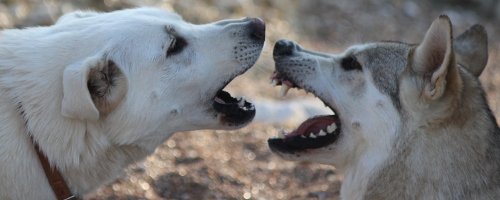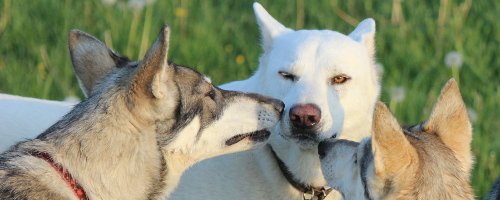
The Inuit Dog, along with most of its wolfalike counterparts is a very loyal, friendly companion. They are very rarely aggressive and seldom show guarding tendencies but adolescents do tend to go through a difficult 'teenage' stage which requires a confident leader. Unlike true ‘wolfdogs’, wolfalikes tend to be confident and outgoing, trainable and somewhat willing to please (if they know there’s something in it for them), however due to the original sled-dog ancestry they can also be prone to selective hearing, stubbornness and high prey drives; they are not recommended for the first-time dog owner.

Inuits are fantastic with children when they are brought up together (you must remember to teach children to respect the dog as much as teaching the dog to respect children). They love the companionship of other dogs and thrive best with plenty of company – be that human or canine. With consistent training from a young age Inuits can be left for short periods, however, they do not like being left for extended lengths of time and can become destructive or develop separation anxiety without company. They are a large breed dog and can play quite boisterously, with male dogs standing at up to 30 inches at the shoulder and female dogs standing at up to 28 inches at the shoulder, they can weigh anything between 30kg and 50kg (sometimes more) when fully grown. It is advised that any companion dogs within the household be of adequate size to stand up to an Inuit's rough play.

If introduced at a young age Inuit Dogs can live harmoniously with cats and other small animals. Socialisation is very important with any puppy and this is especially true for the wolfalike breeds. Puppies learn most of their interacting skills between 8 and 17 weeks of age; this is also the time when they learn things quicker. During this period it important to socialise them with as many people, children, dogs and other animals as possible and desensitise them to situations and noises. It is advisable to enter your puppy in to training classes, not just so that you can learn the best way to train him, but because it is important for socialisation and learning to relax in different environments outside of the home.
